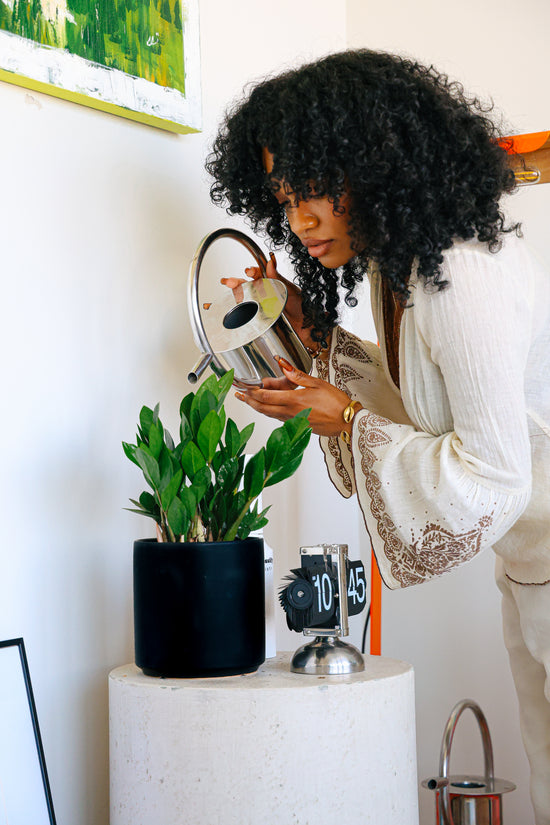The ZZ plant also known as the Zanzibar Gem was first seen in Africa in the late 1800s and found in areas from Kenya and south to parts of South Africa. This is where the plant grew, outdoors, for years. From that point forward, the ZZ plant made its way around the world and into offices and homes all over. The ZZ plant has a rather unique looking root system. Beneath the plants that you see above the soil are thick, potato-like roots known as rhizomes. These store water, which is why the plant can often be subject to over-watering but does well during droughts and places where frequent watering is not always easy.
It is another reason the plant does so well indoors. The dark green color is an indication that they absorb light from even a minimum of sources, which makes them perfect for indoor use. This is a plant that thrives even if you tend to forget to care and is a great choice for frequent travelers, those who occasionally forget to water, or for the office.
Light: Low maintenance and beginner-friendly. Place in bright, indirect sunlight or artificial light. Thrives in low light areas like offices or bathrooms.
Water: Allow the soil to become dry at the top to the touch between watering and do not overwater. Every 1-2 weeks depending on your indoor climate.
Pets: Toxic to pets if ingested.
Aesthetic: Grows in a graceful, wand-like shape that starts thick and bulbous at the base and then tapers to a point. Along the stem are fleshy, dark green oval-shaped leaves that make the plant look like stylized feathers. The entire plant has a waxy, shiny coating that makes it appear to resemble those made of plastic. The ZZ plant has a rather unique looking root system. Beneath the plants that you see above the soil are thick, potato-like roots known as rhizomes. These store water, which is why the plant can often be subject to over-watering but does well during droughts and places where frequent watering is not always easy. It is another reason the plant does so well indoors.
Health Benefits: Has tremendous air purifying properties. Capable of removing significant amounts of xylene, toluene, benzene, and ethylbenzene from the air.
Spirituality Interpretations: Growth, Protection & Good Fortune. An excellent feng shui plant to grow indoors. When placed in the right spot like Southeastern, Southern, and Eastern corners of homes, it helps in bringing protective and purifying energy to your house.












